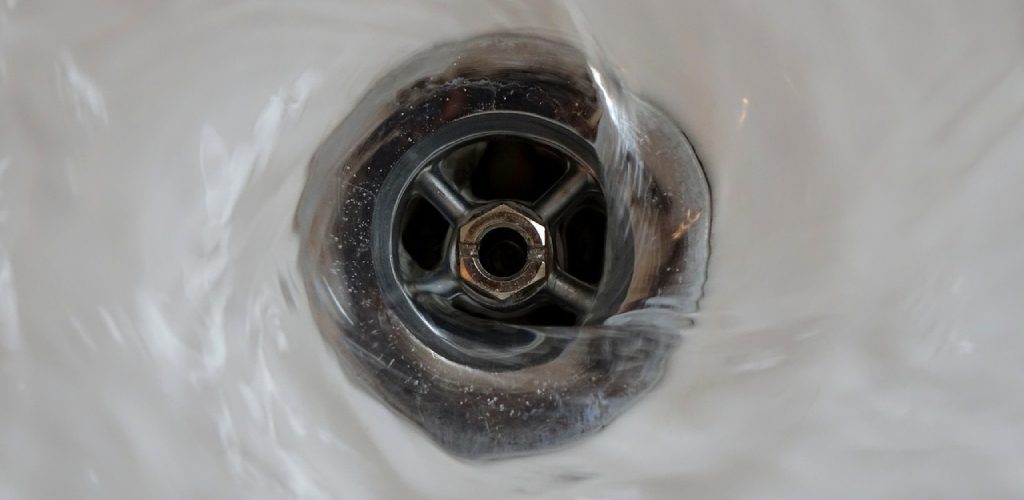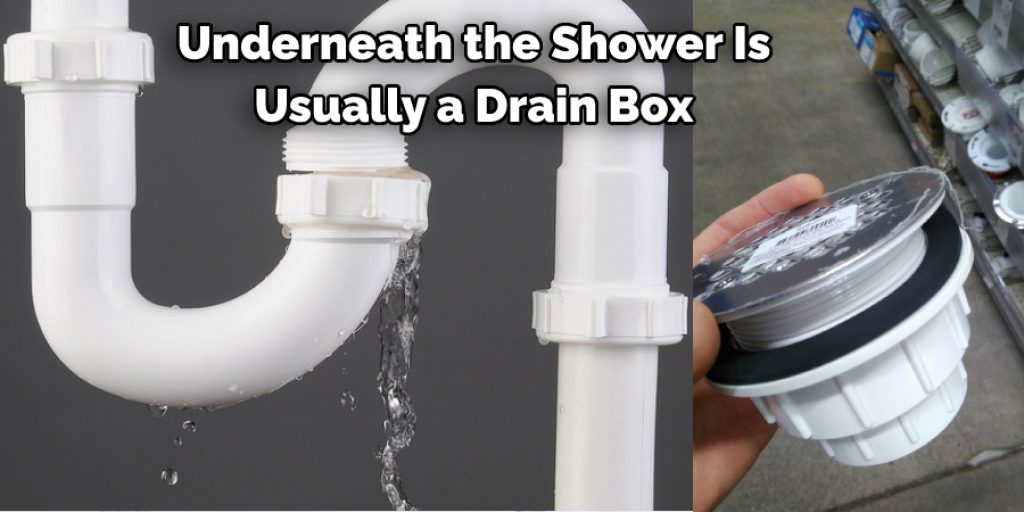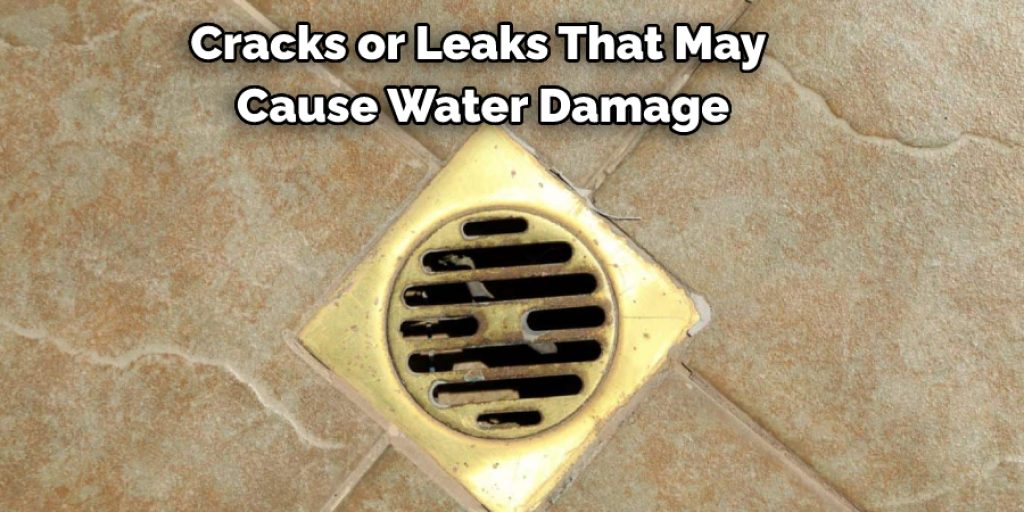How Do Shower Drains Work
We’ve all been in the situation where you are taking a shower, and the water starts to drain slower than it should. You might have even noticed that there is some water on your feet when taking a step back from the shower. What’s going on? Your shower drain is clogged! It may seem like an easy fix, but how do shower drains work? Let us show you.
The blog post will explain how shower drains work. It includes a description of the different types and what they do and helpful maintenance tips. This article is for anyone who has ever wondered why their shower takes so long to drain or if there’s anything they can do about it.

Types of Shower Drain:
1. Strainer Shower Drain
This drain has a wide opening for water to flow through. There is a filter at the bottom of the drain pipe that is shaped like a cone. The filter has doors on all sides that allow hair and other objects to enter the drain, but they cannot pass through because they get caught up in the cross-hatched strainer. This shower drain is not designed to catch all the hair, so it is recommended that synthetic fiber netting be installed over it or that a pop-up stopper or drain grate be added.
2. Pop-Up Shower Drain
Pop-up drains are activated by a lever on the side of the gutter. When the lever is pushed down, a rod inside the drain goes up and pops open a stopper, allowing water to flow through. As soon as you let go of the lever, a spring pushes it back up and closes off the drain.
3. Backwater Shower Drain
A backwater shower drain typically has two drains- one at the back of the shower and another in the middle, to collect water from other shower parts. These two drains lead to a standard pipe that runs under the floor and into an outside drain.
4. Drain Grate Shower Drain
Drain grates do not have stoppers or levers- instead, they have holes or slots to let water pass through. A grate sits on top of the drain and catches large debris like hair and soap that falls into it, preventing it from clogging up the drain lining.
5. Auto Shower Drain
This shower drain uses an electrically controlled valve that regulates the amount of water that enters the sewage system or shower pan. Water can leave only after a certain amount of water has entered the drain, usually just enough to get the job done. Consider an auto shower drain if you do not want a drainage system in your bathroom. It is as efficient and lacks a long pipe leading from your sink or shower to a central sewage system.
Types of Drain Pipe:
Three main types of drainage pipes are used for shower drains. These are ABS, PVC, and Cast Iron.
1. ABS Shower Drainage Pipe
ABS is the cheapest choice due to its low cost, but it also has some weaknesses- it can crack when running hot water and can be easily damaged from being hit or dropped. In addition, it is lightweight but does not have much strength.

2. PVC Shower Drainage Pipe
PVC is stronger than ABS and costs a small amount more. It will not crack or break easily, but it can still be damaged by dropping or hitting it with something. The white pipe looks nice, and the material is easy to work with.
3. Cast Iron Shower Drainage Pipe
The most expensive type is cast iron, with a price as high as five times more than PVC or ABS. It has the best durability and sturdiness but is also the heaviest of the three types of drainage pipes.
How Do Shower Drains Work?
Many living in condos and apartments have a shower drain in their bathrooms. Though many people might not realize it, these drains have some important things behind the scenes to keep everything flowing smoothly. But how do shower drains work? A few parts come together to provide a proper drainage system for a shower or bathtub. Let’s look at some of the essential features and how they work together to make everything function as it should.
There are a few key components that we will need to talk about:
1. The first thing we will look at is the shower grate. This is the part you stand on when you’re in the shower. Sweat, soap, and shampoo all build upon the grate, but it doesn’t make things any better; it can make things worse. The shower grate is designed to sit over a drain underneath the shower floor.
2. Underneath the shower is usually a drain box that holds all of these components in place. It can also serve to direct water flow.

3. The drain system above the shower floor is connected to the drain box and runs through a pipe that goes up into your wall or floor (depending on where your bathroom is located). This pipe usually runs outside the house, where it dumps all the water outside.
4. The main purpose of this drain system is to direct water out of the house and away from where you are standing. It may look simple, but they are integral to your bathroom’s drainage system.
5. The final puzzle piece is the p-trap located below the drain system. These are commonly found in most homes, and they function to trap sewage before it flows into the main sewer line.
The p-trap bends under the shower floor, creating an S-shape that will prevent any bad odors from entering your bathroom when you’re taking a shower (or even just using the toilet). When the drain is opened, the water flows through the p-trap and empties into the sewer line.
Other parts will be located in your shower or tub, but these are some of the main ones. They all work together to create a smooth drainage system for any shower or bathtub where you live. If you notice that something isn’t working properly, you might want to call a plumber.
How Long Does a Shower Drain Last?
A shower drain is something that keeps the water from pushing out the walls of your floor and flooding your home. It’s one of those things we don’t think about except when it gets clogged or stops working for some reason. How long a shower drain lasts depends on how well you take care of it and what type of materials you use in your home.
Most shower drains are brass, but there are also copper ones. Brass is a metal that wears down over time, and the constant water pressure from showers can affect how well it works. Brass is ideal because of its corrosion resistance. It doesn’t react as quickly as other metals with the chemicals in water, which means it won’t wear out as fast.
Tips to Maintain Shower Drains:
1. Clean shower drains regularly to avoid hair and other debris buildups. Scrub the drain with a brush, and use a cleaner if necessary. Remove clogs by clearing out the stopper beneath the drain or using a plunger.
2. Routinely check for leaks beneath shower pans and quickly fix them to prevent standing water and mold growth.
3. When installing a new shower, consider installing an anti-entrapment drain cover if one is not provided with the kit. This will prevent small children from becoming trapped in the drain should they wander into the bathroom when you aren’t looking.
4. Periodically inspect your showers for cracks or leaks that may cause water damage.

5. Drain smells are often caused by too much humidity, resulting in mold growth or bacteria buildup within the drain. You can prevent this by regularly using a dehumidifier to dry out the air and cleaning regularly.
6. Showers require less maintenance than other bathtubs because they are not used for soaking. When you are cleaning other bathroom surfaces, keep this in mind and limit the amount of soap scum that builds up around the drain.
7. Use a hair trap or strainer to prevent hair from clogging the drain. Place the strainer over your shower’s existing drain cover to make it easy to remove debris while bathing, and be sure to clean it regularly.
8. Eliminate standing water and humidity by using a dehumidifier in the bathroom. If you don’t want to install one, place a bowl or dish of vinegar on your shower floor to absorb excess moisture and prevent mold growth.
Conclusion:
After reading this blog post, you should understand how do shower drains work and the factors that can affect their performance. You may also want to take some precautions to keep your drain from getting clogged in the future. If you have any questions about what we discussed or need help with anything related to plumbing, don’t hesitate to contact us! We’re always happy to chat!




